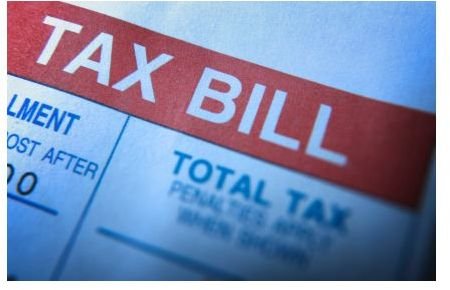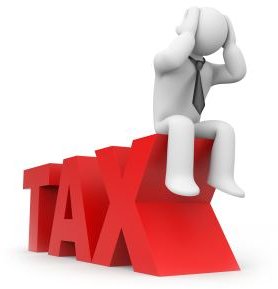Can You Claim the Interest You Paid Before a House Was Foreclosed?
Financial Challenges of Foreclosure
Most homeowners who have gone through the foreclosure process do so due to financial challenges, which have resulted in them being unable to make payments on their home. In some cases, this could be the result of a change in income due to layoffs, illness or change of jobs. Other reasons may be because the homeowner had an adjustable rate mortgage that spiked during a cyclical interest rate adjustment period. In either case, the end result may have been the same; the homeowner was unable to refinance their home for a lower interest rate.
Ultimately, this caused the homeowner to be facing foreclosure. What many lenders will not advise a homeowner (as they are not obligated to) is that in addition to the credit destroying foreclosure, the homeowner may also be faced with an entirely new tax burden that may come as a shock to them in January. A common question is whether you can claim interest paid on a foreclosed house. The answer is no, you cannot, and the problems do not stop there.
Unsympathetic Internal Revenue Service

When a home is foreclosed on, in some states the lender has the opportunity to file for a deficiency judgment. Some states do not allow this process. In nearly all mortgages, however, a borrower is personally liable for the debt that is incurred when they sign a mortgage note. In the event that a property is sold during the foreclosure process, the lender has the right to issue the borrower a Form 1099-C (Cancellation of Debt). This is for any debt that exceeds $600. In some cases, the lender may not submit a copy to the homeowner, but they may file one with the Internal Revenue Service. Homeowers who have gone through the foreclosure process may want to verify with a tax professional (or the lender) if this form has been filed.
Reducing the Tax Burden

Chances are that if a homeowner has had their home foreclosed on it is likely they were in a difficult financial position. In some cases, tax burdens are just an added issue that homeowners have to face. However, there is some good news about this, at least for homeowners who are facing foreclosures and potential tax liabilities.
What cannot be included on a 1099-C
Lender are not allowed to include any interest, late fees or collection fees associated with foreclosure debt on a form 1099-C. These amounts are not considered part of the original debt.
If a home sold for less than the fair market value, the homeowner who lost their home to foreclosure may not be in such dire straits. Lenders must take the fair market value of the property and use that as the basis for the 1099-C. If the amount owed by the homeowner is more than the fair market value, the difference can be filed via 1099-C.

IRS Form 982
Form 982 is designed for homeowners who are theoretically insolvent. This means that the amount of money that is owed is greater than the total sum of their assets. While some homeowners will file for Chapter 7 Bankruptcy as a means of restructuring their debt, they do not have to do this in order to use Form 982. This form is filled out and filed along with the homeowner’s taxes and may allow them to not have to pay taxes on 1099-C income.
The Mortgage Debt Relief Act of 2007
As a result of the number of homes that were foreclosed on, the Mortgage Debit Relief act was passed. According to the IRS website this act is defined as “The Mortgage Debt Relief Act of 2007”, and allows taxpayers to exclude income from the discharge of debt on their principal residence. Debt reduced through mortgage restructuring, as well as mortgage debt forgiven in connection with a foreclosure, qualifies for the relief."
Most homeowners will qualify for this relief. It is critical that homeowners who are facing potential tax liability from a foreclosure sale talk to their tax accountant for advice regarding potential waivers of tax liability.
References
-
IRS Form 1099C (PDF)
-
IRS: The Mortgage Forgiveness Debt Relief Act and Debt Cancellation
-
Nolo.com Tax Consequences
-
Image credits (purchased)
Taxes: Palto/istockphoto.com
Foreclosure Sign: fstop123/istockphoto.com
Tax Bill: DNY59/istockphoto.com
Tax burden: frentusha/istockphoto.com
-
IRS Form 982 (PDF)
